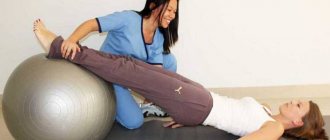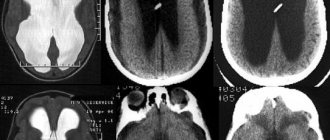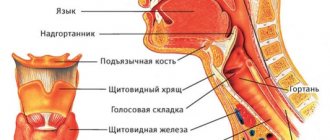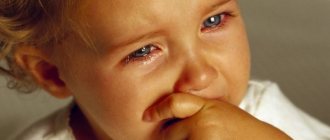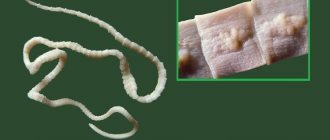Symptoms of rickets in infants - information for parents
Rickets is a multi-metabolic disease characterized by vitamin D deficiency. Most often, the disease is diagnosed in children under three years of age.
Signs of rickets in children under 1 year of age are muscle hypotonia, curvature of tubular bones, flattening of the back of the head, deformation of the chest. Doctors include prematurity, high weight of the newborn, multiple pregnancies, gastrointestinal disorders in the baby and heredity as risk factors. Causes of childhood rickets:
- improper feeding (insufficient intake of phosphorus and calcium from food);
- artificial feeding;
- increased level of need for minerals during the period of intensive growth of the child’s body;
- disruption of the transport of calcium and phosphorus in the body;
- endo- and exogenous vitamin D deficiency;
- endocrinological diseases;
- diseases of the gastrointestinal tract;
- genetic predisposition.
It has been proven that boys are more susceptible to rickets than girls.
Causes of the disease
Vitamin D enters the baby’s body in two ways:
- It is synthesized in the skin under the influence of sunlight (ultraviolet radiation). Further biotransformation takes place in the liver and kidneys.
- With food. In this regard, artificial formula is more nutritious than breastfeeding.
Lack of sunlight and poor nutrition (including mothers) are the main reasons for the development of rickets in infants.
The following factors may increase the risk of developing the disease:
- not getting enough sunbathing;
- high birth weight;
- prematurity;
- refusal of breastfeeding and use of unbalanced formulas;
- rapid weight gain;
- digestive disorders;
- congenital diseases of the liver, kidneys, and endocrine system;
- taking anticonvulsants;
- low physical activity;
- hereditary metabolic disorders.
Degree of development of rickets disease
In terms of severity, the disease can be of the first (mild) degree, second (moderate) and third (severe).
The first degree is asymptomatic. The second is characterized by minor changes in the skeletal system and internal organs. The third is characterized by damage to the nervous system, developmental delays both physical and mental, as well as numerous deformations in the bones and spine.
There are acute, subacute and recurrent course of rickets.
The acute course of rickets is characterized by neurological symptoms and the phenomena of osteomalacia (bone pain, muscle hypotonia, malnutrition, deformation of skeletal bones and pathological fractures).
The subacute course is accompanied by osteoid hyperplasia (proliferation of osteoid tissue). The pathology is manifested by thickening of the wrist, parietal and frontal tubercles, “rachitic rosary”, thickening of the interphalangeal joints on the fingers.
The recurrent degree of development of the disease rickets is characterized by alternating periods of exacerbation and remission with the preservation of residual effects.
Clinical variants of the disease: phosphopenic, calciumpenic and rickets without particularly pronounced changes in calcium and phosphorus levels.
In addition to primary rickets, pediatricians distinguish secondary rickets, which develops against the background of metabolic pathologies, chronic diseases of the kidneys and biliary tract, as well as with long-term use of anticonvulsants.
On our website Dobrobut.com you will find more information about which vitamin deficiency provokes rickets in humans, and you can make an appointment with a pediatrician. If necessary, the center can undergo complete diagnostics, including laboratory tests.
What are the consequences?
The most severe consequences are associated with changes in the shape of the skeleton, namely:
- curvature of the jaw and, as a result, difficulty chewing, malocclusion, caries and problems with diction;
- deformation of the pelvis and spine;
- mental retardation.
Rickets is a dangerous disease that can leave a mark for life. To prevent this, you need to be attentive to any changes in the child’s behavior and report them to the doctor. You can consult with a specialist and make an appointment by phone or through the online form on our clinic’s website.
FIND OUT PRICES
Symptoms of rickets in infants
The first signs that may appear as early as the third or fourth month after birth, pediatricians include constipation, baldness of the back of the head, shuddering, unreasonable crying, anxiety, and increased sweating. Early diagnosis and proper treatment guarantees a complete cure for the baby.
Secondary symptoms of rickets in infants:
- increasing muscle weakness;
- a clear lag in motor development (the baby does not hold his head well, cannot roll over and sit up on his own without assistance);
- late teething;
- deformation of the bones of the torso, skull and spine;
- large forehead, flat back of the head, X-shaped deformation of the legs;
- "frog" belly;
- disorders of internal organs.
With qualified treatment of rickets in children, improvements occur within 2-3 months. However, formed bone deformations, as a rule, do not disappear completely. Some (large forehead, flattened back of the head, deformed chest) remain for life.
Prevention of rickets
Prevention of rickets should begin before birth. A pregnant woman should receive adequate nutrition and enough time in the fresh air. After birth, prevention of rickets must begin from the first days of life: breastfeeding, walks in the fresh air, massage and gymnastics from 1.5 months. Specific prevention of rickets with vitamin D3 usually begins from 3-4 weeks of life, if necessary earlier, 1 drop (500 IU) in all seasons of the year, excluding summer.
It is recommended to dissolve the drops in a spoonful of milk; adding drops to the bottle is not recommended, since this does not achieve the required concentration of the active substance. The vitamin D preparation is stored in conditions excluding exposure to light and air at a temperature not exceeding 10 degrees.
The therapeutic dose of vitamin D and the course of treatment should be prescribed by a doctor based on the child’s existing health problems, in the absence of contraindications to the use of the drug.
Diagnostics
The diagnosis is made after a thorough examination of the baby and obtaining the results of additional examination (laboratory tests, ultrasound, densitometry and CT scan of tubular bones and x-ray). The latter is rarely used.
Laboratory tests: blood test for electrolytes, test for alkaline phosphatase activity, and test for vitamin D metabolites.
It is important to carry out a differential diagnosis of rickets with hydrocephalus, cerebral palsy, rickets-like diseases and congenital hip dislocation.
Clinical manifestations
Due to insufficient mineral metabolism, the development of bone tissue is disrupted. In addition, other systems also suffer: nervous, endocrine, muscular, etc.
Pathology has stages, its manifestations can vary greatly in intensity.
Stages of rickets in infants:
- initial stage;
- height;
- recovery (convalescence);
- residual effects.
The severity of rickets is determined by the severity of symptoms.
It is important to recognize rickets when the first symptoms appear. These include:
- thickenings on the ribs at the transition points between bone tissue and cartilaginous tissue - “rachitic rosary” (see photo);
- increased sweating;
- the baby is restless, there may be twitching of legs and arms during sleep;
- the edges of the large and small fontanelles soften;
- sweat and urine acquire a peculiar sourish odor.
The very first manifestations may occur at 2–3 months of life.
Damage to the skeletal system
The specificity of rickets is such that the bone apparatus undergoes the greatest changes. Even if there is a sufficient amount of calcium and phosphorus in the diet, if there is a lack of vitamin D, they will not be absorbed normally.
Damage to the skeletal system is manifested in the following:
- the edges of the fontanel and the sutures of the bones of the skull soften;
- the shape of the skull changes, it is sloping in the occipital region;
- the frontal and parietal regions protrude;
- fontanelles do not close for a long time;
- deformation of the chest is noted: “cobbler’s chest” - depression in the lower part of the sternum or “keeled (chicken)” chest - protrusion of the sternum;
- bone growths—“rosary beads”—appear on the ribs;
- rachitic kyphosis (curvature of the spine) develops;
- on the legs and hands, thickenings appear on the epiphyses of long bones - “rachitic bracelets”, on the phalanges of the fingers - “strings of pearls”;
If you ignore the problem and do not treat rickets, the symptoms will increase. There is a change in the pelvic bones, it flattens and decreases in size. The bones of the legs are curved in an O-shape or X-shape. Flat feet appear.
Teeth appear late, they are susceptible to caries, and the bite is disturbed.
Defeat of other systems
Calcium deficiency inevitably affects other systems of the baby.
The muscles and central nervous system suffer the most.
The muscles become flabby and lose tone. The tendons are not strong, the joints become loose. When a child sits down, he prefers to cross his legs and support his torso with his arms. The rectus abdominis muscles are hypotonic, can diverge, and a characteristic “frog belly” appears.
Neurological changes affect almost everything. Behavior changes, tearfulness and anxiety increase. Sweating of the skin increases, especially at the point of contact of the scalp with the pillow. Increased skin sensitivity (hyperesthesia). The baby begins to cry and be capricious when touched, although this has not been noticed before.
Doctor's advice
Walking is very important for a baby, especially under the age of one year. 20 minutes of exposure to the sun (not at noon, so as not to get sunburned, but in the morning or evening) will significantly increase the level of vitamin D. You must remember that the sun's rays penetrate through fabrics, clothes, and clouds, so you should not expose your child to the scorching sun for a long time, It is enough for him to sleep in the stroller outside even in cloudy weather.
Victoria Druzhikina Neurologist, Therapist
Deep progression of the pathology leads to general lethargy, lethargy, and apathy. Conditioned reflexes are poorly formed in sick children.
General information
Rickets is a disease that primarily develops in humans during childhood and infancy.
This disease has been known to mankind for a very long time. Thus, references to this disease were found in the manuscripts of ancient physicians. For the first time, clear symptoms of rickets were described in the seventeenth century in England. By the way, English doctors called this disease “fog disease”, since rickets most often manifested itself in the children of working people who constantly lived in the smog caused by smoking factories. But still, the real cause of this disease was determined only in the 1980s.
The term "rickets" comes from the Greek word for "spine". This disease is relatively common among children. With rickets, bone formation is impaired. This occurs due to a deficiency of calcium-phosphorus metabolism . Signs of rickets are found in children all over the world. However, rickets most often develops in infants in northern countries, where there is very little sunlight. Some modern scientists claim that more than half of children suffer from rickets of varying severity. More often, this disease is diagnosed in infants born in autumn and winter.
In countries where medicine is well developed, this disease is strictly prevented, and children receive adequate treatment as soon as the first signs of rickets appear. However, after an X-ray examination, hidden signs of rickets may be revealed in children, which are difficult to notice during examination or in photographs.
If a person suffered rickets in infancy, the consequences of the disease remain for life. A person who has recovered from rickets remains with poor posture , flat feet , deformation of the pelvic bones , and myopia . caries , also develop in adulthood . But if a person had only a mild degree of rickets in childhood, then such consequences are not observed.
List of sources
- Novikov, P.V. Modern rickets (classification, methods of diagnosis, treatment and prevention): lecture for doctors, 2nd. – edition, Moscow, 2011;
- Pediatrics: national guide: In 2 vols. - M.: GEOTAR-Media, 2009. - T.1;
- Strukov V.I. Rickets and osteoporosis. - Penza, 2004;
- Novikov P.V. Rickets and hereditary rickets-like diseases in children. - M.: Triada-X, 2006;
- Korovina N.A. Phosphorus-calcium metabolism disorders in children (problems and solutions): a guide for doctors / N.A. Korovina, I.N. Zakharova, A.V. Cheburkin. - Moscow, 2005.
